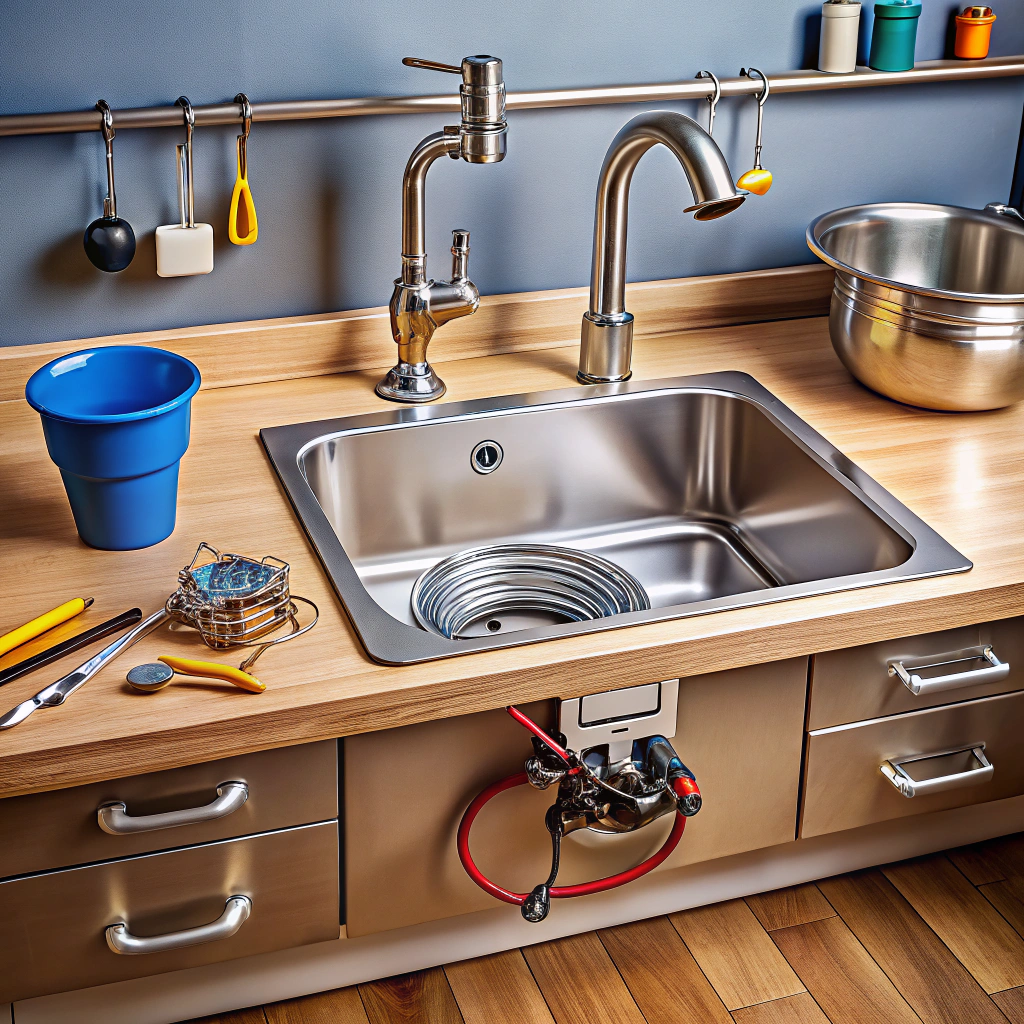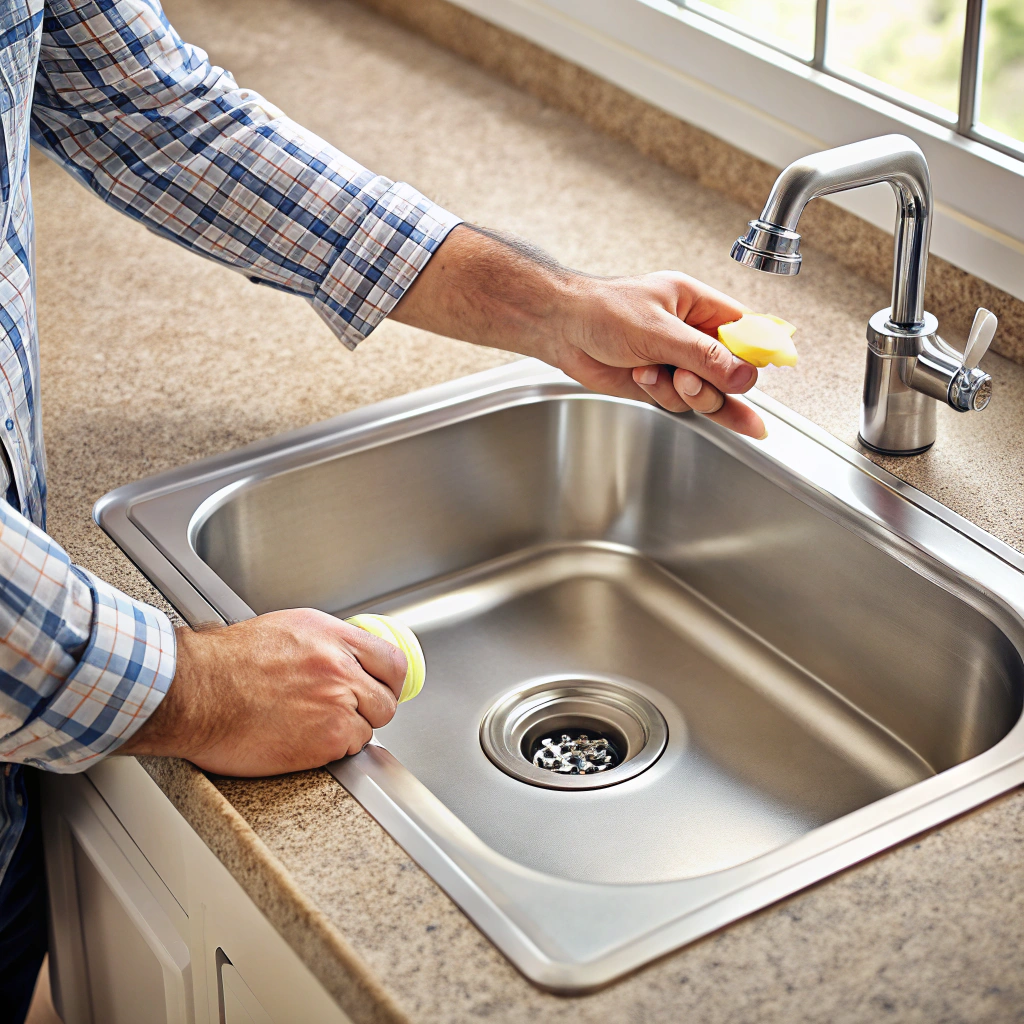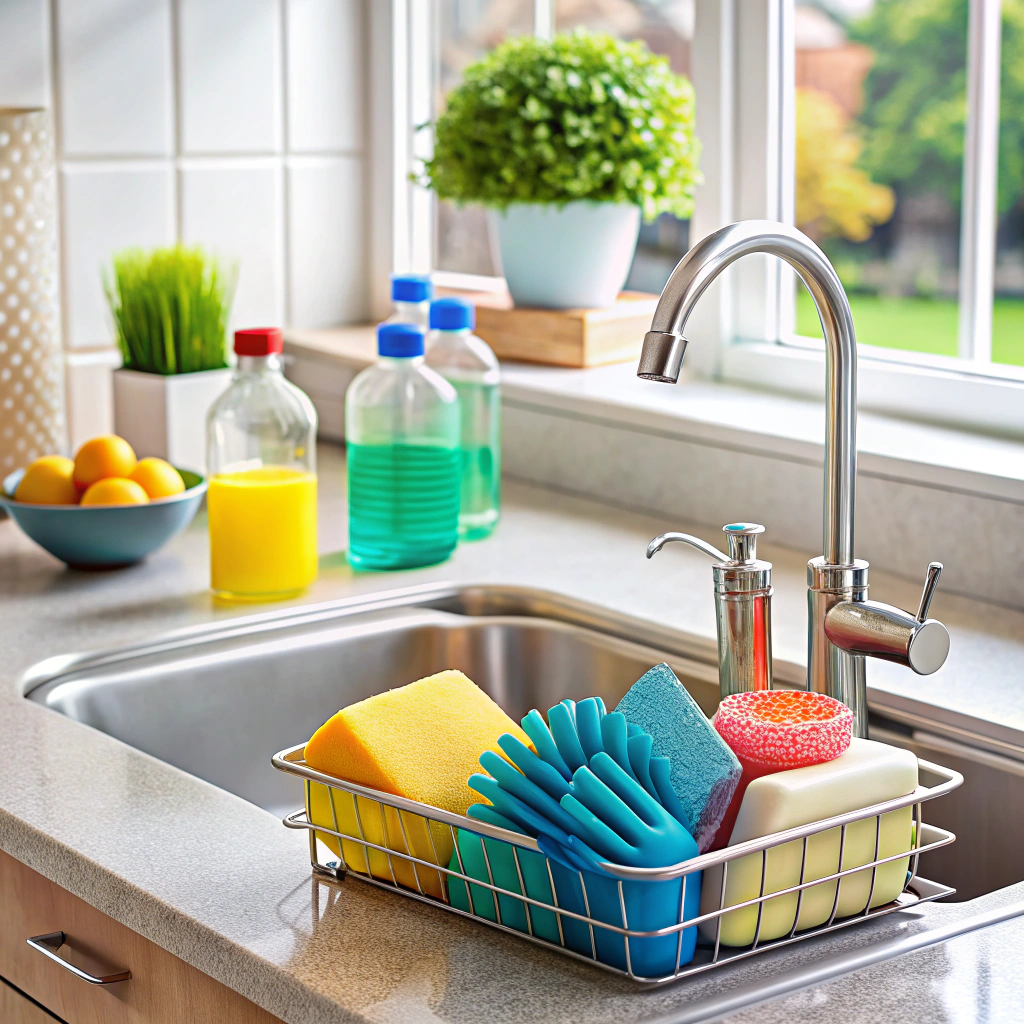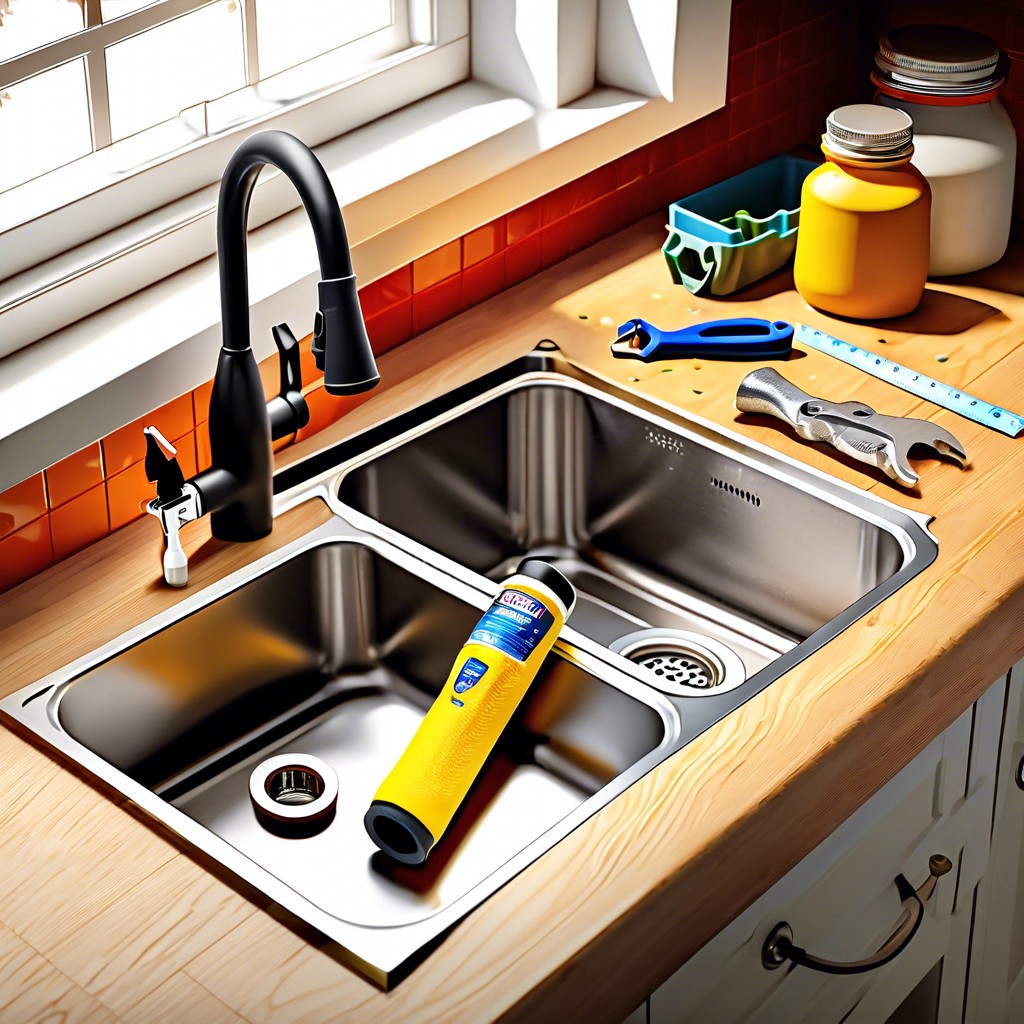Last updated on
Learn how to fix a leaking faucet base with simple, step-by-step instructions that even a novice DIYer can handle.
Tired of that annoying drip-drip-drip that makes you feel like you’re living in a leaky submarine? Fear not! Fixing a faucet leaking at the base is easier than you think. With this step-by-step guide, you’ll have your faucet troubles fixed faster than your cat can knock over a glass of water. Dive in and get ready to be the hero of your household plumbing woes!
Key takeaways:
- Turn off the water supply first.
- Remove faucet handle to access components.
- Replace worn O-ring for a tight seal.
- Apply plumber’s tape for threaded connections.
- Test for leaks after reassembly.
What's Inside
Turn Off the Water Supply
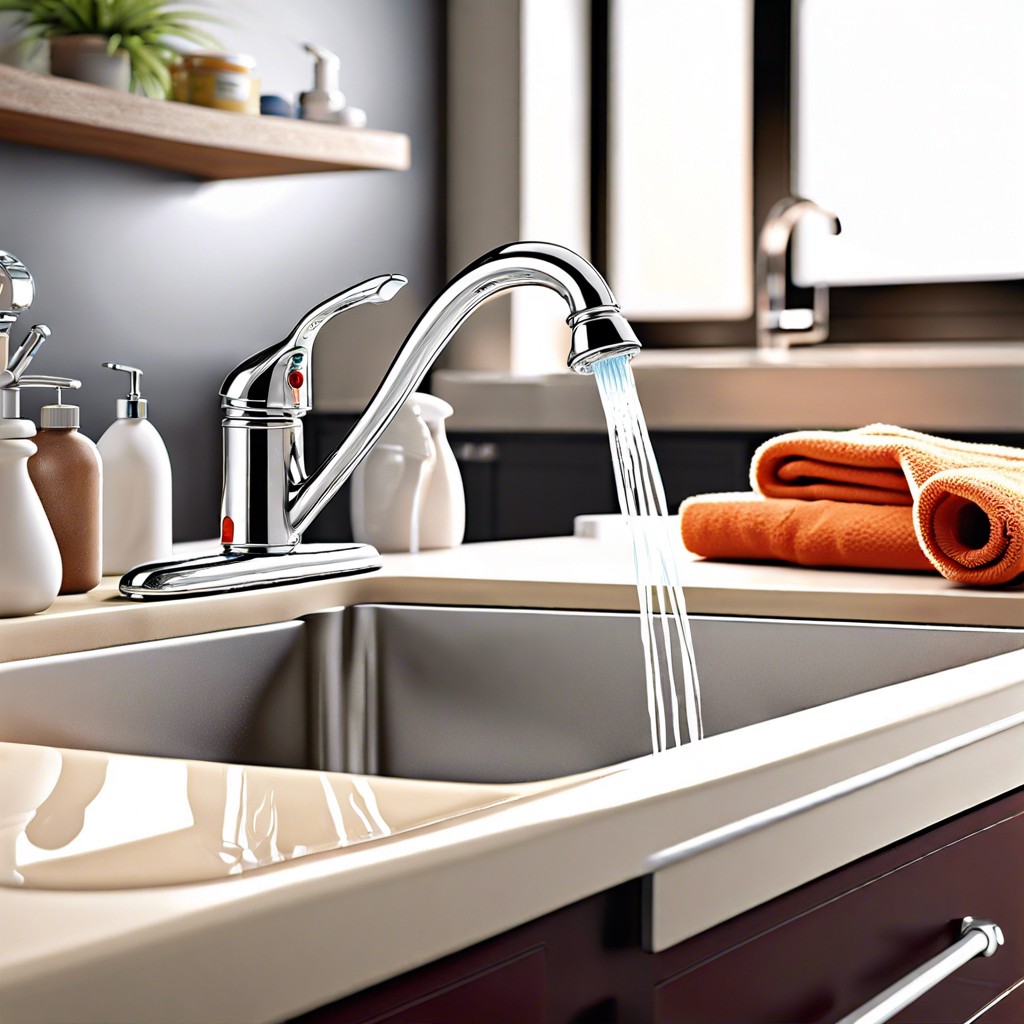
First things first, locate your shut-off valves. These are usually found under the sink. Imagine them as the guardians of the water flow. Turn these valves clockwise to stop the water.
If your shut-off valves are playing hide and seek or you simply can’t find them, head to your main water supply. Think of it as the master switch that controls all the water in your house. Give it a firm twist to shut it off.
Consider placing a bowl or bucket under the faucet. This will catch any remaining water drops and save you from a mini-flood.
Go ahead and test by turning on the faucet. No water should come out. It’s like giving yourself a high-five for a job well done. Simple and effective.
Remove the Faucet Handle
Alright, time to get that handle off. First, locate the set screw. It’s usually sneaky, hiding under a decorative cap or at the base of the handle. Got it in sight? Great!
Use an Allen wrench or screwdriver, depending on your faucet type, to loosen the set screw. Just a few turns should do it. Now, gently lift the handle off the faucet.
If it resists, don’t force it. Give it a little wiggle to coax it free. Remember, handles can be shy! For those stubborn types, a cloth and some pliers can help—just be gentle to avoid scratches.
That’s it! Handle removed without a fuss. Now you’re ready for the next step.
Inspect and Replace O-Ring
Let’s dive into the heart of the matter: the O-ring, the unsung hero of your faucet. Often overlooked, this small rubber component ensures that water stays where it’s supposed to be.
First, locate the O-ring, usually found at the base of the spout or inside the handle. It may be slightly distorted or worn-out. No superhero fairs well after countless battles, after all.
Gently remove the old O-ring with a flathead screwdriver or a similar tool. Be careful, you don’t want more damage here.
Compare the old O-ring with a new one. Size matters – the replacement should be an exact match.
Slip the new O-ring into place. A bit of plumber’s grease will help it slide on smoothly, plus it’ll last longer. Think of it as a spa day for your faucet.
That’s it for the O-ring. Pretty straightforward, right? You’re well on your way to a drip-free kitchen.
Check and Tighten Handle Screws
Got your screwdriver ready? Fantastic! Now locate the set screw. It’s usually hiding under a decorative cap on the handle. Gently pry that cap off with a flat-head screwdriver, but don’t send it flying across the kitchen like a projectile.
Once you’ve got a clear view, tighten the set screw. This little guy might be the source of your woes if it’s loose. A couple of turns should do the trick. Not too tight, though—you don’t want to strip the screw.
Notice any rust or mineral buildup? Give it a quick clean. Even faucets can appreciate a little spa day. And if the screw is too worn out, swap it out for a new one. They’re cheap and easy to find at any hardware store.
Simple enough, right? Happy tightening!
Examine the Valve Seat
Now, let’s talk about the valve seat. This is basically the throne upon which the valve rests. If it’s damaged, it’s like trying to sit on a chair with a broken leg—things are gonna leak.
First, shine a flashlight inside to check for any cracks or grooves. A damaged valve seat can’t hold a tight seal.
Next, if it looks worn out, you can use a valve seat wrench or a seat dresser to fix minor imperfections. Imagine it like smoothing out the rough edges of a wooden chair.
If it’s beyond repair, consider replacing it. Don’t worry, valve seats are pretty inexpensive, so your wallet won’t cry.
Keep it simple, keep it smooth, and ensure it’s ready for that valve to sit pretty!
Replace Faulty Washer
Old washers can be sneaky culprits for leaks. Here’s how you can handle this troublemaker:
First, locate the washer. It’s usually snugly placed at the bottom of the valve seat. If it’s worn out or cracked, it’s time for a switcheroo.
Next, grab a matching replacement. Hardware stores have a plethora of washers. Take the old one with you to ensure you get the perfect fit.
When installing the new washer, make sure it sits perfectly. A misaligned washer is as bad as an old one – it can cause more leaks.
Finally, tighten the screw that holds the washer in place, but don’t go Hulk on it. Over-tightening can squish the washer too much, leading to future problems.
Apply Plumber’s Tape
Here comes our little wonder worker, plumber’s tape! Also known as Teflon tape, this stuff is magic for sealing threaded connections. Trust me, you’ll want this in your tool kit.
Always start with clean threads, removing any old tape or gunk.
Wrap the tape around the threads in the direction they turn, usually clockwise. This helps it stay in place as you tighten the connection.
Make sure to overlap. You want at least two to four layers to ensure a snug seal.
Don’t overdo it. Too much tape can make connections difficult to tighten properly.
If your faucet connects with joints or compression fittings, plumber’s tape can help with those too.
Once taped up, reassemble and tighten, but remember, snug—not herculean strength. Your pipes will thank you.
Reassemble Faucet Components
You’ve got everything disassembled, so now it’s time for the reverse magic trick. Here are the steps to get it all back together:
- Fit the new O-ring or washer securely into place. Make sure it sits snugly in its groove, much like a cookie in a cookie cutter.
- Align the valve seat and gently press it back, being careful not to cross-thread anything. That’s plumbing lingo for “don’t mess it up.”
- Slide the handle back onto the faucet stem. This should be as smooth as sliding into your favorite pair of slippers.
- Tighten the handle screw, but not too tight. Think of it like a firm handshake, not a vice grip.
- Double-check everything looks like it did before, minus the leak of course. If your faucet resembles a distant cousin of a spaceship, you’re probably doing it right.
Refreshed, reassembled, and ready for a leak-free life! Now onward to turning that water back on.
Turn On the Water Supply
Ease the valve handle slowly to avoid a sudden surge of water pressure that might surprise you or your pipes.
Once the water is on, keep an eye on the faucet. Are there any signs of dripping or leakage? If it’s still leaking, don’t fret; it’s likely a loose part or a missed step.
Sometimes, it helps to let the water flow for a bit. This can clear out any debris that might be affecting the seal.
Also, double-check behind the faucet. Sneaky leaks can sometimes surface there.
After a few minutes of observation and no leaks, congratulations, you’ve likely fixed the issue. Now take a moment to high-five yourself!
Test for Leaks
Turn on the water supply slowly. Carefully observe the base of the faucet for any signs of leakage.
If water starts pooling around the base, identify which part may need further tightening or adjustment.
Run both hot and cold water to ensure comprehensive testing. Wipe dry the base to better see if new leaks appear.
Place a dry paper towel around the base; it will easily show any drips.
Finally, give the faucet a few turns on and off to make sure it’s functioning smoothly without any hidden surprises.
All clear? Fantastic! You’ve mastered that pesky leak.
